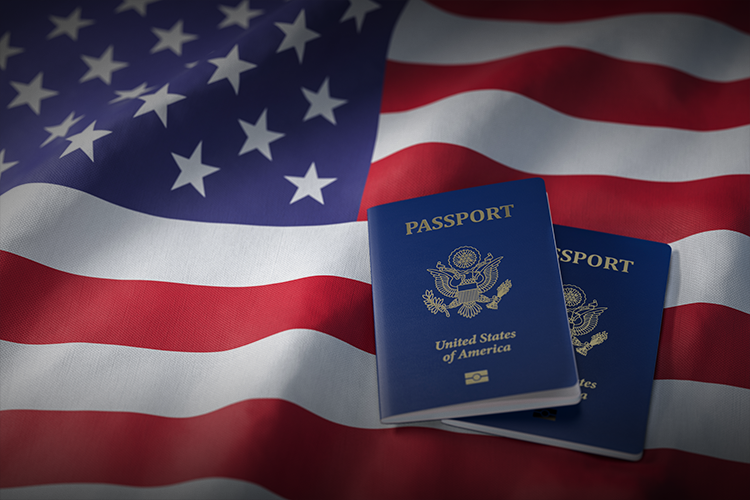Currently, there are over 170 US Passport Visa-Free Countries in the world. This article aims to educate you on how to travel to these Visa-free countries if you wish to. But then, why would you want to consider traveling to a visa-free country? Or, why would you opt for visa-free travel? The popular and most viable answer is that Visa-free travel is a great way to save time and money. However, it does not mean that you can stay indefinitely in any country. You must follow the rules and regulations of each destination, such as how long you can stay, what activities you can do, and what documents you need to carry.
In this article, I provide a list of US passport visa-free countries, as well as some information on how to get an e-visa or a visa on arrival for some other destinations. I also explain what types of visas these countries offer, what documents you need to apply for them, how to process your application, and how long your visa will be valid.

List of US Passport Visa-Free Countries
According to various sources, US citizens and US passport visa holders can visit 185 countries and territories without a visa or with a visa on arrival as of March 2023. These are:
- Albania
- Andorra
- Antigua and Barbuda
- Argentina
- Armenia
- Australia (Electronic Travel Authority)
- Austria
- Bahamas
- Bahrain (e-visa or visa on arrival)
- Bangladesh (visa on arrival)
- Barbados
- Belarus
- Belgium
- Belize
- Benin (e-visa or visa on arrival)
- Bolivia (visa on arrival)
- Bosnia and Herzegovina
- Botswana
- Brazil
- Brunei
- Bulgaria
- Burkina Faso (visa on arrival)
- Cambodia (e-visa or visa on arrival)
- Cameroon (visa on arrival)
- Cape Verde (visa on arrival)
- Chile
- Colombia
- Cook Islands
- Costa Rica
- Cote d’Ivoire (Ivory Coast) (e-visa or visa on arrival)
- Croatia
- Cuba (tourist card required)
- Cyprus
- Czech Republic
- Denmark (including the Faroe Islands and Greenland)
- Djibouti (e-visa or visa on arrival)
- Dominica
- Dominican Republic (tourist card required)
- Ecuador
- Egypt (e-visa or visa on arrival)
- Estonia
- Eswatini
- Ethiopia (e-visa or visa on arrival)
- Fiji
- Finland
- France (including French Guiana, French Polynesia, and other French territories)
- Gabon (e-visa or visa on arrival)
- Gambia
- Germany
- Ghana (visa on arrival)
- Greece
- Grenada
- Guatemala
- Guinea (visa on arrival)
- Guinea-Bissau (visa on arrival)
- Haiti
- Honduras
- Hungary
- Iceland
- India (e-visa)
- Indonesia (free entry permit or e-visa)
- Ireland
- Israel (including Palestine)
- Italy (including Vatican City and San Marino)
- Jamaica
- Japan
- Jordan (e-visa or visa on arrival)
- Kazakhstan
- Kenya (e-visa or visa on arrival)
- Kiribati
- Kosovo
- Kuwait (e-visa or visa on arrival)
- Kyrgyzstan (e-visa or visa on arrival)
- Laos (e-visa or visa on arrival)
- Latvia
- Lebanon (free entry permit or e-visa; conditions apply)
- Lesotho (e-visa or free entry permit; conditions apply)
- Liechtenstein
- Lithuania
- Luxembourg
- Madagascar (eVisas only; free entry permit suspended due to COVID-19 pandemic)
- Malawi
- Maldives
- Malaysia
- Mali
- Malta
- Marshall Islands
- Mauritania
- Mauritius
- Mexico
- Micronesia
- Moldova
- Monaco
- Mongolia
- Montenegro
- Morocco
- Mozambique
- Myanmar
- Namibia
- Nauru
- Nepal
- Netherlands
- New Zealand
- Nicaragua
- Niger
- Nigeria
- North Macedonia
- Norway
- Oman
- Pakistan
- Palau
- Panama
- Papua New Guinea
- Paraguay
- Peru
- Philippines
- Poland
- Portugal
- Qatar
- Romania
- Rwanda
- Saint Kitts and Nevis
- Saint Lucia
- Saint Vincent and the Grenadines
- Samoa
- San Marino
- Sao Tome and Principe
- Saudi Arabia
- Senegal
- Serbia
- Seychelles
- Sierra Leone
- Sierra Leone
- Singapore
- Slovakia
- Slovenia
- Solomon Islands
- South Africa
- South Korea
- Spain
- Sri Lanka
- St. Kitts and Nevis
- St. Lucia
- St. Vincent and the Grenadines
- Suriname
- Sweden
- Switzerland
- Taiwan
- Tajikistan
- Tanzania
- Thailand
- Timor-Leste
- Togo
- Tonga
- Trinidad and Tobago
- Tunisia)
- Turkey
- Turks and Caicos Islands
- Tuvalu
- Uganda
- Ukraine
- United Arab Emirates
- United Kingdom
- Uruguay
- Uzbekistan
- Vanuatu
- Vatican City
- Venezuela
- Vietnam
- Zambia
- Zimbabwe
Eligibility for Getting Visa-Free Entry
To be eligible for visa-free entry to the US passport visa-free countries, US citizens and US passport holders must meet certain criteria:
- They must have a valid US passport with at least six months’ validity remaining from the date of arrival.
- They must not have any criminal convictions or pending charges that could make them ineligible for entry.
- They must not have any contagious diseases that could pose a public health risk.
- They must comply with the immigration rules and regulations of each country they visit.
- They must respect the customs and culture of each country they visit.
Types of Visa Granted by Visa-Free Countries
Depending on the country and the purpose of travel, different types of visas may be granted by the visa-free countries for US passport holders:
- Tourist visa: This type allows visitors to engage in tourism activities such as sightseeing, leisure, cultural exchange, etc. It does not allow visitors to work or study in the host country.
- Business visa: This type allows visitors to conduct business activities such as meetings, conferences, trade fairs, etc. It does not allow visitors to work or study in the host country.
- Transit visa: This type allows visitors to pass through the host country en route to another destination. It usually has a short validity period and does not allow visitors to leave the airport or port area.
- Other types: Some countries may offer other types of visas.
of visas such as medical visas (for treatment purposes), student visas (for educational purposes), working holiday visas (for temporary work opportunities), etc.
Documents Required for Applying for Visa-Free Entry
Processing entry into US passport visa-free countries can be easier than doing the same for countries that demand a Visa from US passport holders. However, although most visa-free countries do not require any documents other than a valid passport, some may require additional documents such as:
- Return/onward ticket.
- Proof of accommodation.
- Proof of sufficient funds.
- Health certificate.
- Travel Insurance.
These documents are usually presented at the port of entry along with your passport and visa (if applicable). However, some countries may require you to submit them online before departure as part of your ETA or eVisa application.
How to Process Your Visa for Visa-Free Countries
The process of obtaining your visa for visa-free countries depends on whether they require a VOA, an ETA, an eVisa, or none at all.
- The immigration officer will stamp your passport and other documents at the port of entry for visa-free countries.
- At the port of entry, you must fill out an application, pay a fee, and have the immigration officer stamp your passport for VOA countries. Along with your application form and fee, some countries require photos, return/onward tickets, proof of accommodation, proof of sufficient funds, a health certificate, etc.
- ETAs and eVisas must be applied for online before departure and paid for with a credit card or other online payment method. A confirmation email with a reference number or barcode must be printed and presented at the port of entry with your passport and other required documents. Immigration officers stamp visas on passports.
The process of applying for an ETA or an eVisa may vary from country to country, so it is advisable to check the official website of each country for detailed instructions and requirements.
Tenure of Visa-Free Entry
The tenure of visa-free entry refers to how long you can stay in a visa-free country without overstaying your visa. Being allowed to stay in any of the US passport visa-free countries is not a right; it is subject to change and is regulated by the government of the destination country.
The tenure varies from country to country, ranging from 14 days to one year. Some countries may also allow you to extend your stay by applying for a visa extension at a local immigration office or online.
It is important to keep track of your stay duration and exit the country before your visa expires. Overstaying your visa can result in fines, deportation, or even bans from entering the country again.
Conclusion
Visa-free travel is a great privilege for US citizens who want to explore different countries without going through lengthy and costly visa procedures. However, visa-free travel also comes with certain responsibilities and obligations that travelers must be aware of and comply with.
Before traveling to any visa-free country, US citizens should:
- Check their eligibility for visa-free entry
- Check the type of visa granted by each country
- Check the documents required for applying for visa-free entry
- Check the process of obtaining their visa (VOA, ETA, eVisa)
- Check the tenure of their visa-free entry
- Respect the laws and customs of each country
By following these steps, US citizens can enjoy their visa-free travel experience without any hassle or trouble.






